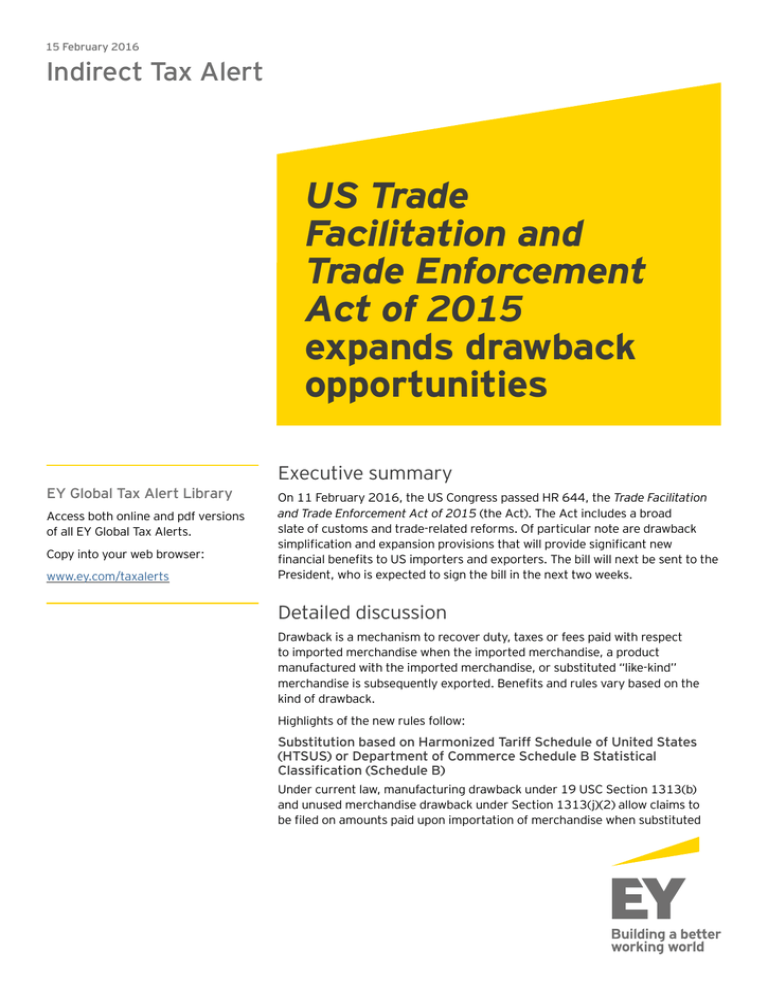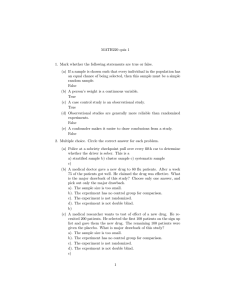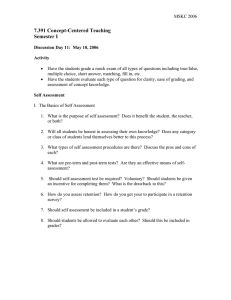
15 February 2016
Indirect Tax Alert
US Trade
Facilitation and
Trade Enforcement
Act of 2015
expands drawback
opportunities
EY Global Tax Alert Library
Access both online and pdf versions
of all EY Global Tax Alerts.
Copy into your web browser:
www.ey.com/taxalerts
Executive summary
On 11 February 2016, the US Congress passed HR 644, the Trade Facilitation
and Trade Enforcement Act of 2015 (the Act). The Act includes a broad
slate of customs and trade-related reforms. Of particular note are drawback
simplification and expansion provisions that will provide significant new
financial benefits to US importers and exporters. The bill will next be sent to the
President, who is expected to sign the bill in the next two weeks.
Detailed discussion
Drawback is a mechanism to recover duty, taxes or fees paid with respect
to imported merchandise when the imported merchandise, a product
manufactured with the imported merchandise, or substituted “like-kind’’
merchandise is subsequently exported. Benefits and rules vary based on the
kind of drawback.
Highlights of the new rules follow:
Substitution based on Harmonized Tariff Schedule of United States
(HTSUS) or Department of Commerce Schedule B Statistical
Classification (Schedule B)
Under current law, manufacturing drawback under 19 USC Section 1313(b)
and unused merchandise drawback under Section 1313(j)(2) allow claims to
be filed on amounts paid upon importation of merchandise when substituted
2
Indirect Tax Alert
merchandise “of the same kind or quality” is used in
a manufacturing process, exported or destroyed. This
“same kind or quality” analysis focuses on whether the
imported merchandise and the merchandise used in
the manufacturing process, exported or destroyed are
commercially interchangeable.
The Act simplifies this analysis by allowing substitution
between articles having the same eight-digit HTSUS
classification. This form of substitution is similar to that
already in effect for petroleum product drawback under
19 USC Section 1313(p). Experience with Section 1313(p)
drawback has shown that HTSUS-based substitution not only
simplifies the drawback claim process, but also allows for
expanded substitution opportunities beyond the limitations
that result from the need for products to be commercially
interchangeable.
The Act also allows for substitution under Section
1313(j) (2) where the first eight digits of an article’s
Schedule B number correspond to its HTSUS classification,
regardless of whether the Schedule B number corresponds
to more than one HTSUS eight-digit subheading. This is a
novel form of drawback substitution, and has the potential to
significantly increase substitution opportunities.
The Act does not limit HTSUS-based substitution only to
certain tariff classifications, as has been the case under
Section 1313(p) drawback. It does, however, contain
certain limitations on the application of this HTSUS-based
substitution for Section 1313(j)(2) drawback where the
HTSUS product description begins with “other.” While
this may limit some claims, the move to HTSUS-based
substitutions will likely bring a net gain of opportunities for
prospective claimants while simplifying the claim process.
Expanded time frame
Under current drawback provisions, an imported or substituted
product must be used in a manufacturing process, exported
or destroyed within three years from the date of importation
in order to support a manufacturing or unused merchandise
drawback claim. The Act expands this window for all drawback
claims to five years from the date of importation.
Taxes and fees included in manufacturing drawback
claims
Under current drawback rules, many drawback claims, including
those for manufacturing drawback, are limited to 99% of only
the duties paid on the imported merchandise. Additional “taxes
and fees” recoverable under Section 1313(j)(2) drawback were
not available for manufacturing claims. The Act provides
uniformity in authorizing drawback for 99% of duties, fees
and taxes paid for all types of drawback.
Anti-abuse limitation on refunds
The Act includes a new provision which limits drawback to
the lesser of the actual duties, fees and taxes paid on import,
or the duties, fees and taxes which would have been paid if
the exported article were imported. As a result, importers
that import a high value item and export a low value item
with the same HTSUS classification generally will have
drawback claims limited based on the lower value.
Relaxation of transfer documentation requirements
Drawback rules currently in effect require a certificate
of delivery to be provided when an importer transfers
merchandise to a manufacturer or claimant who ultimately
relied on the merchandise in submitting a drawback claim.
Claimants were required to submit these certificates as part
of their claims.
The Act removes this certificate requirement, stating that
business records kept in the normal course of business will
be sufficient evidence of a transfer.
The provisions of the Act will become effective upon its
enactment with a notable caveat - claimants will not be
able to file claims under the new provisions until two years
after enactment. This delay is to allow for the development
of the ability to file drawback claims within the Automated
Commercial Environment (ACE). However, when this delay
period passes and claimants can begin filing drawback
claims in ACE, claimants will be able to take advantage of
the expanded time frame described above and file drawback
claims on imports that occurred up to five years before the
date upon which claims may be filed. For example, if the
enactment date is 20 February 2016, claims cannot be filed
until 20 February 2018, but can include imports dating to 20
February 2013.
Implications
Companies that will benefit under the new rules include:
•Manufacturers of similar products under different brands
in the US and foreign locations: Under previous law the
different brands were likely not viewed as commercially
interchangeable, while under the new rules the “like kind”
determination is made under objective, HTSUS standards.
Indirect Tax Alert
To the extent one branded product is imported and another
exported under the same HTSUS, these products will be
substitutable for drawback.
•Importers and exporters of products subject to excise tax
•Commodities traders with international operations
While the Act promises opportunities for expanded
claims and simplified operations, it will be important to
structure the transactions, and create and retain suitable
documentation, in order to maximize drawback benefits while
preserving optimal operational, distributional and taxation
structure. Accordingly, companies wishing to take advantage
of the opportunities presented by the Act should take steps to
understand the full scope of the changes – both statutory and
practically – and how they impact each aspect of the drawback
claim process and their business. As imports before the
effective date will be eligible for drawback under the new rules,
businesses which may benefit are well advised to address the
structural and operational requirements immediately.
For additional information with respect to this Alert, please contact the following:
Ernst & Young LLP, Dallas
• William M. Methenitis
Ernst & Young LLP, Houston
• H. Michael Leightman
• Bryan J. Schillinger
Ernst & Young LLP, San Jose
• J. Michael Heldebrand
Ernst & Young LLP, New York
• Kristine L. Price Dozier
Ernst & Young LLP, Chicago
• Nathan B. Gollaher
+1 214 969 8585
william.methenitis@ey.com
+1 713 750 1335
+1 713 750 5209
michael.leightman@ey.com
bryan.schillinger@ey.com
+1 408 947 6820
michael.heldebrand@ey.com
+1 212 773 2662
kristine.price@ey.com
+1 312 879 2055
nathan.gollaher@ey.com
Ernst & Young LLP, Indirect Tax Services - Excise Tax, Houston
• Ashley Scheele
+1 713 750 8272
ashley.scheele@ey.com
Ernst & Young LLP, Indirect Tax Services - Excise Tax, Minneapolis
• Karie Roers
+ 612 341 4751
karie.roers@ey.com
3
EY | Assurance | Tax | Transactions | Advisory
About EY
EY is a global leader in assurance, tax, transaction
and advisory services. The insights and quality
services we deliver help build trust and confidence
in the capital markets and in economies the world
over. We develop outstanding leaders who team to
deliver on our promises to all of our stakeholders.
In so doing, we play a critical role in building a better
working world for our people, for our clients and for
our communities.
EY refers to the global organization, and may refer to
one or more, of the member firms of Ernst & Young
Global Limited, each of which is a separate legal entity.
Ernst & Young Global Limited, a UK company limited
by guarantee, does not provide services to clients.
For more information about our organization, please
visit ey.com.
Indirect Tax
© 2016 EYGM Limited.
All Rights Reserved.
EYG no. CM6243
1508-1600216 NY
ED None
This material has been prepared for general informational
purposes only and is not intended to be relied upon as
accounting, tax, or other professional advice. Please refer
to your advisors for specific advice.
ey.com



